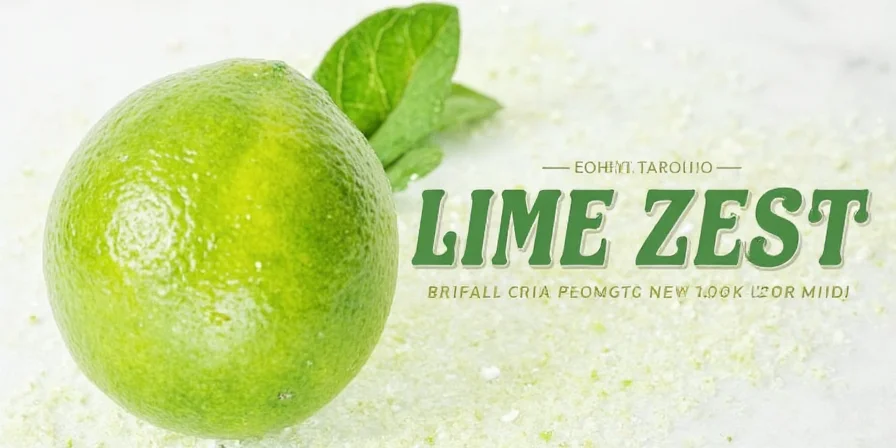Lime zest is the thin, colored outer layer of a lime's skin containing concentrated citrus oils that deliver intense flavor without added moisture. One medium lime yields 1-2 teaspoons of zest—critical for brightening dishes while avoiding the bitter white pith underneath. Here's exactly how to use it.
What Is Lime Zest? (The Essential Definition)
Lime zest refers strictly to the vibrant green or yellow outer rind (0.3-0.5mm thick) where aromatic oils concentrate. This differs from lime peel, which includes the bitter white pith. Zest provides floral, earthy notes through compounds like limonene and pinene—making it 10x more flavor-intense than juice.

| Component | Flavor Impact | Common Mistake |
|---|---|---|
| Zest (outer rind) | Floral, bright, complex | Grating too deep into pith |
| Pith (white layer) | Bitter, unpleasant | Mistaking for usable zest |
| Juice | Acidic, sour | Using instead of zest for dry applications |
Why Chefs Prioritize Fresh Lime Zest
Unlike bottled alternatives, fresh zest activates flavor receptors through volatile oils that degrade within 24 hours. This explains its power in moisture-sensitive recipes:
- Baking: Adds citrus notes to shortbread without altering dough consistency
- Savory dishes: Cuts richness in ceviche or coconut curry (higher terpene concentration than lemon)
- Spice rubs: Binds to fats without making rubs soggy

How to Zest Properly (Step-by-Step)
- Wash limes with baking soda scrub to remove wax
- Use microplane (not peeler) for fine, uniform shreds
- Roll lime on counter first to loosen oils
- Zest immediately before use—oils oxidize rapidly
- Avoid pith by applying light pressure (only colored part)

Pro Storage Guide
| Method | Duration | Flavor Retention |
|---|---|---|
| Refrigerated (airtight) | 24 hours | 95% |
| Freezer (ice cube tray + oil) | 3 months | 85% |
| Dried (dehydrator) | 6 months | 70% |

Key Usage Scenarios
- When to use zest over juice: Custards, spice rubs, dry marinades, baked goods
- Substitution ratio: 1 tsp zest = 2 tbsp juice (but not vice versa)
- Bitterness fix: Blanch zest in boiling water for 10 sec if pith was accidentally grated
Frequently Asked Questions
What's the difference between lime zest and lime peel?
Lime zest refers only to the thin, colored outer layer containing aromatic oils. The peel includes both zest and the bitter white pith underneath. Always use zest exclusively for cooking to avoid bitterness.
How much zest does one lime yield?
One medium lime typically produces 1-2 teaspoons of zest. This varies based on lime size and skin thickness—key limes yield less than Persian limes.
Can I substitute lemon zest for lime zest?
Yes, but adjust quantities. Lemon zest has milder, sweeter notes while lime offers intense floral acidity. Use 25% more lemon zest to approximate lime's impact in savory dishes.











 浙公网安备
33010002000092号
浙公网安备
33010002000092号 浙B2-20120091-4
浙B2-20120091-4